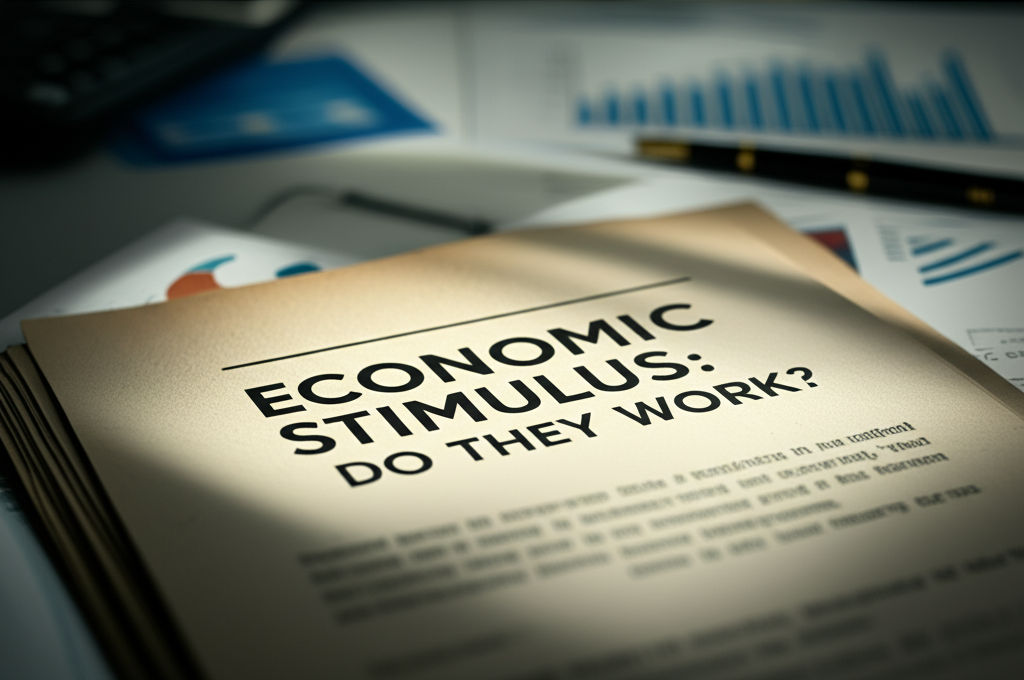Modern HR Best Practices
Emily Willis

Photo: Modern HR Best Practices
Modern HR Best Practices: Cultivating a Thriving Workforce for Business Success
In today's rapidly evolving business landscape, Human Resources (HR) has transcended its traditional administrative role to become a strategic cornerstone of organizational success. Modern HR best practices are no longer just about managing people; they're about proactively shaping a dynamic, engaged, and resilient workforce that drives innovation and achieves business objectives. This shift is crucial for businesses aiming to thrive in a competitive global market, as effective HR management directly impacts productivity, profitability, and overall organizational health.
The essence of modern HR lies in its ability to adapt, innovate, and prioritize the human element within an organization. It's about creating an environment where employees feel valued, empowered, and connected to a larger purpose. Companies that embrace these forward-thinking HR strategies consistently report higher employee satisfaction, enhanced retention rates, and better alignment with their overarching business goals.
The Pillars of Modern HR Best Practices
Modern HR strategies are built upon several interconnected pillars, each contributing to a holistic approach to workforce management.
1. Prioritizing Employee Experience and Engagement
Employee experience is at the heart of modern HR. It encompasses every interaction an employee has with their organization, from recruitment to offboarding. A positive employee experience directly correlates with higher engagement, which in turn boosts productivity and reduces turnover.
- Holistic Well-being Support: Beyond physical health, modern HR addresses mental, emotional, and financial well-being. This includes offering mental health support, flexible work arrangements, and programs that promote work-life balance. Studies show that even moderate improvements in employee well-being can boost productivity by up to 5%.
- Continuous Feedback and Recognition: Moving away from annual reviews, modern HR emphasizes real-time feedback and consistent recognition. This fosters a culture of open communication and appreciation, significantly motivating employees. Highly engaged employees are 84% more likely to have received recognition for going above and beyond.
- Cultivating a Positive Culture: HR plays a vital role in shaping an inclusive and supportive company culture where employees feel respected and valued. This involves establishing employee resource groups and promoting an environment of trust and openness.
2. Leveraging Data-Driven HR and Analytics
Gone are the days of "gut feeling" HR decisions. Modern HR relies heavily on data and analytics to make informed, strategic choices. Data-driven HR allows organizations to track trends, understand employee performance, and proactively address potential issues.
- Enhanced Recruitment and Talent Acquisition: Data analytics can identify the best hiring sources, predict candidate success, and streamline the recruitment process, reducing time to hire and improving the quality of hires.
- Predictive Workforce Planning: By analyzing workforce data, HR can anticipate future staffing needs, identify skill gaps, and proactively plan for professional development and upskilling initiatives.
- Improved Employee Retention: Predictive analytics can flag employees at risk of leaving, enabling HR to develop targeted retention strategies before it's too late. Organizations that use data to guide decisions report higher employee satisfaction and enhanced retention rates.
3. Embracing Strategic Workforce Planning
Strategic workforce planning ensures that an organization has the right people with the right skills in the right roles at the right time. This forward-looking approach aligns HR initiatives with the company's long-term objectives.
- Skills-Based Hiring and Development: With the accelerating pace of technological change, particularly the rise of AI, the need for updated skills is paramount. Modern HR focuses on skills-based hiring, often rethinking traditional college degree requirements, and invests heavily in upskilling and reskilling programs. SHRM data indicates that 83% of HR leaders believe upskilling will be essential for workers to remain competitive in an AI-shaped job market.
- Adaptability and Agility: A dynamic and well-managed workforce can quickly adapt to market changes and external pressures, ensuring business resilience and relevance.
- Succession Planning: Identifying and developing future leaders internally helps ensure continuity and stability within the organization.
4. Championing Diversity, Equity, and Inclusion (DEI)
DEI is no longer just a buzzword; it's a fundamental component of a thriving organizational culture and a competitive advantage. HR plays a pivotal role in developing, implementing, and sustaining DEI initiatives.
- Attracting Diverse Talent: HR strategies include creating inclusive job descriptions, broadening recruitment channels, and implementing blind recruitment practices to attract candidates from varied backgrounds.
- Fostering an Inclusive Culture: This involves establishing Employee Resource Groups (ERGs) and embedding DEI principles into core values, daily practices, and career advancement opportunities. Diverse teams foster creativity and innovation.
- Addressing Bias: Unconscious bias training and data tools help prevent biases from negatively impacting hiring and promotion processes.
5. Integrating Cutting-Edge HR Technology (HR Tech)
Technology is revolutionizing HR, transforming processes to be more efficient, data-driven, and employee-centric. HR tech encompasses software, hardware, tools, and platforms that optimize key HR functions.
- Automation of Routine Tasks: HR management systems (HRMS) automate administrative tasks like payroll, benefits management, and onboarding, freeing HR professionals to focus on strategic initiatives. An organization even implemented an AI talent acquisition system that reduced manual effort by 70%.
- Enhanced Employee Experience Platforms: These platforms offer self-service portals, chatbots, and engagement tools, giving employees easy access to HR services and resources, improving their overall journey.
- AI and Machine Learning: AI-powered tools are moving beyond basic automation to advanced strategic workforce decision-making, including resume screening, predictive analytics for turnover, and personalized onboarding plans.
6. Evolving Performance Management
Modern performance management shifts from traditional, often rigid, annual reviews to a continuous feedback model that focuses on ongoing development and growth.
- Continuous Feedback and Check-ins: Regular, informal check-ins and real-time feedback mechanisms help employees understand their performance and areas for improvement more immediately.
- Goal Alignment and Development: Performance discussions are linked to broader organizational goals and focus on employee growth, skill development, and career advancement opportunities. Only 29% of employees are satisfied with career advancement opportunities, highlighting a critical area for improvement.
Implementing Modern HR Best Practices: Actionable Steps
Transitioning to modern HR requires a strategic and phased approach. Here are actionable steps to consider:
- Assess Your Current State: Conduct a thorough audit of your existing HR processes, technologies, and employee feedback mechanisms. Identify areas where traditional methods are hindering efficiency or engagement.
- Define Your Vision and Goals: Clearly articulate what you aim to achieve with modern HR practices. Link these goals directly to your overall business objectives, such as improved retention, increased productivity, or enhanced innovation.
- Invest in HR Technology: Research and implement HR technology solutions (HRIS, HRMS, HR analytics platforms) that align with your strategic goals. Prioritize tools that automate repetitive tasks, provide data insights, and enhance employee experience.
- Prioritize Employee Listening: Implement regular pulse surveys, feedback platforms, and open communication channels to understand employee sentiment and needs. Use this feedback to inform HR strategies.
- Develop a Learning Culture: Invest in continuous learning and development programs, offering opportunities for upskilling and reskilling in areas relevant to current and future business needs. Consider personalized learning paths.
- Embed DEI into Your DNA: Go beyond compliance. Integrate DEI principles into every stage of the employee lifecycle, from recruitment and onboarding to development and promotion. Form affinity groups and ensure leadership commitment.
- Train Your Leaders: Equip managers with the skills to provide continuous feedback, foster engagement, and support employee well-being. Leadership effectiveness is strongly linked to higher business outcomes.
The Tangible Benefits of Modern HR
The adoption of modern HR best practices translates into significant benefits for organizations:
- Increased Productivity and Performance: Engaged employees are more productive. Companies with highly engaged workforces have 21% higher profitability and 17% higher productivity. Aligning employee goals with organizational objectives can lead to a 22% bump in employee performance.
- Higher Employee Retention: Organizations focusing on employee experience and engagement see improved retention rates, reducing costly turnover. Teams with low engagement experience turnover rates 18% to 43% higher than highly engaged counterparts.
- Enhanced Innovation and Adaptability: Diverse and engaged teams bring varied perspectives, fueling creativity and enabling organizations to adapt quickly to market changes.
- Improved Business Outcomes: Strategic HR practices, when aligned with business goals, directly drive revenue growth
Latest ✨
View Allfinding a conducive study environment to enhance focus and concentration. It provides tips on understanding your needs, exploring different study options, transforming your space, and developing focused study habits.
Emily Willis
Deflation explained: Discover why falling prices can harm the economy. Learn its causes, effects, and how to protect your finances.
Emily Willis
Demystify venture capital funding! This guide helps aspiring entrepreneurs secure VC, understand its benefits, and determine if it's right for their high-growth...
Emily Willis
sleep for physical and mental well-being, discussing the benefits of sleep such as physical restoration, brain function, emotional regulation, concentration, and reduced risk of chronic diseases. It explains the different stages of the sleep cycle and provides guidelines for how much sleep individuals of different ages need.
Emily Willis
Business
View All
June 8, 2025
Team Building Activities for WorkUnlock workplace synergy! Discover how effective team building activities boost communication, engagement, innovation, and productivity for high-performing team...
Emily Willis

August 4, 2024
The Importance of Financial Management for Small and Medium Enterprises (SMEs)emphasizes the importance of effective financial management for small and medium enterprises (SMEs) in a competitive business environment.
Emily Willis

June 9, 2025
Cloud Computing for Small BusinessUnlock growth & efficiency! Discover how cloud computing empowers small businesses with cost savings & agility in the digital age.
Emily Willis
Economy
View AllUnpack the 17 Sustainable Development Goals (SDGs): a global blueprint addressing poverty, climate change, and inequality for a sustainable future.
Read MoreUnlock the secret of price elasticity! Learn how price changes affect demand, revenue, and your everyday purchasing decisions. Essential for businesses & shoppe...
Read MoreEconomic Stimulus: Do they work? Unpack government's toolkit, from fiscal to monetary policy, and understand their true impact on your economy.
Read MoreEntertainment
View All
August 5, 2024
Music Universal Language: Connecting and Inspiring Across CulturesMusic has the power to transcend language barriers and connect people on a deep emotional level. It serves as a bridge between cultures, fostering understanding and appreciation for diversity. The universality of rhythm and melody creates a sense of unity, while the diversity of musical styles allows for exploration and creativity.
Emily Willis

August 4, 2024
Profiles of Famous Artists Who Inspire the Younger Generationthe inspirational aspects of famous artists such as Vincent van Gogh, Frida Kahlo, Pablo Picasso, Banksy, Yayoi Kusama, Jean-Michel Basquiat, Georgia O'Keeffe, Andy Warhol, Kehinde Wiley, and Ai Weiwei. It highlights their perseverance, innovation, authenticity, social commentary, mental health advocacy, and representation, among other qualities, and how these aspects continue to inspire young artists to pursue their creative dreams.
Emily Willis

August 4, 2024
The Latest Music Trends, Artists Influencing Pop Culture, and How Digital Platforms Facilitate the Distribution of Music GloballyThe music industry is constantly changing due to consumer preferences, technology, and the influence of artists. Digital platforms have revolutionized music creation, distribution, and consumption, leading to genre fusion, the rise of independent artists, and collaborative projects. Influential artists like Billie Eilish, BTS, and Taylor Swift have shaped pop culture globally. Streaming services, social media, and direct-to-fan engagement have transformed music distribution. Digital platforms also promote cultural diversity and inclusivity, expand markets and revenue, and drive technological advancements. The industry is also focusing on sustainability and ethical practices. To succeed in the future, stakeholders must embrace digital transformation and champion inclusivity.
Emily Willis
Health
View AllQuality sleep is essential for overall health and well-being, impacting physical, cognitive and emotional functioning. Lack of quality sleep can lead to a variety of health issues, including weakened immune function, heart problems, weight gain and cognitive impairment.
Emily Willis
Regular physical activity is crucial for maintaining long-term health and well-being. It has numerous benefits, including improving cardiovascular health, aiding in weight management, enhancing mental health, strengthening bones, boosting immune function, and promoting longevity.
Emily Willis
Heart disease is a leading cause of death globally, but early detection and prevention strategies can reduce its impact. This article discusses the importance of early detection, common risk factors, preventive measures, and lifestyle changes for heart health. Understanding heart disease, recognizing symptoms, and undergoing regular screenings are crucial. Common risk factors include high blood pressure, high cholesterol, diabetes, smoking, obesity, physical inactivity, and family history. Symptoms of heart disease include chest pain, shortness of breath, fatigue, irregular heartbeat, and swelling. Diagnostic tests and screenings include blood pressure measurement, cholesterol screening, blood glucose test, ECG, stress test, and imaging tests. Preventive measures include adopting a heart-healthy diet, regular physical activity, quitting smoking, managing stress, maintaining a healthy weight, and limiting alcohol consumption. Medications and treatment options may be necessary for individuals at high risk or diagnosed with heart disease.
Emily Willis
Trending 🔥
View All
2
3
4
5
6
7
8
10
Lifestyle


Sports
View AllAugust 5, 2024
Celebrating Sports Legends: Honoring Iconic Figures and Their Enduring Impact
Read MoreAugust 5, 2024
Sportsmanship in the Spotlight: Cultivating Respect, Integrity, and Ethical Behavior
Read MoreTechnology
View All
August 4, 2024
Bridging the Digital Divide: Ensuring Everyone Has Access to Technology
we can bridge this gap and create a more inclusive digital landscape.

August 4, 2024
The Rise of Edge Computing: Transforming Data Processing
Edge computing is a distributed computing model that processes data closer to its source, reducing latency, saving bandwidth, and enhancing security. It is transforming industries such as manufacturing, healthcare, retail, transportation, and energy by enabling real-time data processing and improving operational efficiency.

August 4, 2024
The Rise of Blockchain Technology: Applications Beyond Cryptocurrency
Blockchain technology, initially associated with cryptocurrencies, has expanded to have diverse applications across industries. It is a decentralized digital ledger that ensures secure, transparent, and immutable transactions. Beyond cryptocurrency, blockchain has been applied to supply chain management, healthcare, voting systems, smart contracts, digital identity verification, real estate transactions, and supply chain finance. Future trends include enhancing interoperability, addressing scalability issues, and exploring regulatory frameworks. Overall, blockchain technology has the potential to revolutionize various sectors by enhancing efficiency, security, and trust in operations.

August 4, 2024
All-Time High Cybersecurity Breach: How to Safeguard Your Company and Personal Information
threat of cybersecurity breaches in today's digital age, highlighting factors contributing to the rise in cyberattacks such as increased reliance on technology, evolving threats, remote work, and profit motive for cybercriminals.


















